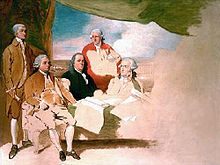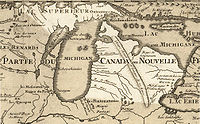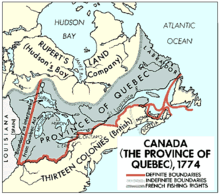Michigan

Michigan History
- (1620) French Canadian explorers arrived in upper region of Michigan
- (1634) Jean Nicolet passed through Straits of Mackinac while exploring the area
- (1659) Pierre-Esprit Radisson and Medard des Groseilliers traveled to western Lake Superior with fur trading Native Americans
- (1665) Claude-Jean Allouez and followers reported copper deposits in Keweenaw Peninsula region
- (1668) First permanent European settlement established by French missionaries, Fathers Dablon and Marquette, at Sault Sainte Marie
- (1673) Jesuit missionary, Jacques Marquette and fur trader Louis Jolliet, led small group to explore great river called Messissipi by Indians
- (1679) Rene Robert Cavelier, Sieur de La Salle, established Fort Miami, first French fort in area
- (1680) LaSalle abandoned Fort Miami; traveled across Lower Peninsula
- (1686) Daniel Greysolon, Sieur du Lhut, established Fort St Joseph (now Port Huron)
- (1701) French army officer, Antoine de la Mothe Cadillac, founded Detroit
- (1754 – 1763) French and Indian War
- (1758) British captured Fort Frontenac, cut off New France’s supply and communication into Michigan
- (1760) British captured Detroit, French rule ended
- (1763) France ceded all lands in North America east of Mississippi River to Great Britain in Treaty of Paris; Ottawa Indians, led by Chief Pontiac, led revolt against British, captured all forts in Michigan except Detroit
- (1787) Michigan became part of Northwest Territory in Northwest Ordinance of 1787
- (1796) British evacuated Detroit, other posts now under terms of Jay Treaty; Wayne County established as administrative division of Northwest Territory
1800’s
- (1805) Michigan Territory created, seat of government established in Detroit; much of Detroit destroyed by fire
- (1812) War of 1812; Detroit, Fort Mackinac surrendered to British
- (1813) American forces retook Detroit
- (1819) Ojibwe, Ottawa, Potawatomi Indians ceded more than six million acres in Lower Peninsula to United States; Indians began mass exodus to the south
- (1824) Chicago Road surveyed between Fort Dearborn and Detroit
- (1835) Conflict with Ohio (Toledo War) over border; Ohio granted lands around Toledo, Michigan received entire Upper Peninsula
- (1837) Michigan became 26th U. S. state
- (1842) Copper mining began near Keweenaw Point; last Indian lands ceded in Michigan by treaty
- (1844) Iron ore discovered in Upper Peninsula
- (1847) Lansing named State Capital; Dutch Calvinist separatists founded Holland, Michigan
- (1854) Republic Party organized at Jackson
- (1855) Soo Canal and Locks opened, linked Lake Superior with Lake Huron
- (1861 – 1865) Civil War; over 90,000 men from Michigan served
- (1871) Fires in Port Huron, Holland and Manistee killed 200, burned over 1.2 million acres
- (1881) Great “Thumb Fire” (Huron Fire) killed 282 people, damages $2,347,000, was first natural disaster served by American Red Cross
 (1896) Charles King of Detroit first person to design, build, test drive gasoline-powered automobile
(1896) Charles King of Detroit first person to design, build, test drive gasoline-powered automobile- (1899) Ransom E. Olds established first automobile factory in Detroit
Thousands of years before the arrival of the first Europeans, eight indigenous tribes lived in what is today the state of Michigan. They included the Ojibwa, Menominee, Chippawa, Miami, Ottawa, and Potawatomi, who were part of the Algonquianfamily of Amerindians, as well as the Wyandot, who were from the Iroquoian family and lived in the area of present-day Detroit. It is estimated that the native population at the time the first European arrived was 15,000.
The first white explorer to visit Michigan was the Frenchman Étienne Brûlé in 1620, who began his expedition from Quebec City on the orders of Samuel de Champlain and traveled as far as the Upper Peninsula. Afterward, the area became part of Louisiana, one of the large colonial provinces of New France. The first permanent European settlement in Michigan was founded in 1668 at Sault Ste. Marie by Jacques Marquette, a French missionary.
The French built several trading posts, forts, and villages in Michigan during the late 17th century. Among them, the most important was Fort Pontchartrain du Détroit, established by Antoine de Lamothe Cadillac. This grew to become Detroit. Up until this time, French activities in the region were limited to hunting, trapping, trading with and the conversion of local Indians, and some limited subsistence agriculture. By 1760, the Michigan countryside had only a few hundred white inhabitants.
From 1774 to 1776
Michigan as part of the Province of Quebec from 1774 to 1776.
Territorial disputes between French and British colonists helped start the French and Indian War as part of the larger Seven Years’ War, which took place from 1754 to 1763 and resulted in the defeat of France. As part of the Treaty of Paris, the French ceded all of their North American colonies east of the Mississippi River to Britain. Thus the future Michigan was handed over to the British. However, since 1761, the Indians in the area were not happy with the way the British treated them. In 1763, the Indians were furious that Great Britain had gained control of the area and war began at Fort Detroit under the leadership of Pontiac, and quickly spread throughout the region. The war was known as Pontiac’s War and lasted three years. Eight British forts were taken; others, including Fort Detroit and Fort Pitt, were unsuccessfully besieged. Well aware of the influx of yankees into the region, Great Britain chose to give back the area to Canadiens. In 1774, the area was made part of Quebec. During this period Detroit grew rapidly. The rest of Michigan continued to be sparsely populated. Regional growth proceeded slowly because the British were more interested in the fur trade and peace with the natives than in settlement of the area.
From 1776 to 1837
During the American Revolutionary War, the local European population, who were primarily American colonists that supported independence, rebelled against Britain. The British, with the help of local tribes, continually attacked American settlements in the region starting in 1776 and conquered Detroit. In 1781, Spanish raiders led by a French Captain Eugene Poure travelled by river and overland from St Louis, liberated British-held Fort St Joseph, and handed authority over the settlement to the Americans the following day. The war ended with the signing of the Treaty of Paris in 1783, and Michigan passed into the control of the newly formed United States of America. In 1787, the region became part of the Northwest Territory. The British, however, continued to occupy Detroit and other fortifications and did not definitively leave the area until after the implementation of the Jay Treaty in 1796.
 Unfinished contemporaneous painting of the American diplomatic negotiators of the Treaty of Paris which brought official conclusion to the Revolutionary War and gave possession of Michigan and other territory to the new United States.
Unfinished contemporaneous painting of the American diplomatic negotiators of the Treaty of Paris which brought official conclusion to the Revolutionary War and gave possession of Michigan and other territory to the new United States.
The land which is now Michigan was made part of Indiana Territory in 1800. Most was declared as Michigan Territory in 1805, including all of the Lower Peninsula. During the War of 1812, British forces from Canada captured Detroit and Fort Mackinac early on, giving them a strategic advantage and encouraging native revolt against the United States. American troops retook Detroit in 1813 and Fort Mackinac was returned to the Americans at the end of the war in 1815.
Over the 1810s, the indigenous Ojibwa, Ottawa, and Potawatomi tribes increasingly decided to oppose white settlement and sided with the British against the U.S. government.
After their defeat in the War of 1812, the tribes were forced to sell all of their land claims to the U.S. federal government by the Treaty of Saginaw and the Treaty of Chicago. After the war, the government built forts in some of the northwest territory, such as at Sault Ste. Marie. In the 1820s, the U.S. government assigned Indian agents to work with the tribes, including arranging land cessions and relocation. They forced most of the Native Americans to relocate from Michigan to Indian reservations further west.
During the 1820s, the population of Michigan Territory grew rapidly, largely because of the opening of the Erie Canal in 1825. Its connection of the navigable waters of the middle Great Lakes to those of the Atlantic Ocean dramatically sped up transportation between the eastern states and the less-inhabited western territories. The canal created new possibilities for transport of produce and goods to market, as well as eased passage of migrants to the west.
Michigan’s oldest university, the University of Michigan was founded in Detroit in 1817 and was later moved to its present location in Ann Arbor. The state’s oldest cultural instititon, the Historical Society of Michigan, was established by territorial governor Lewis Cass and explorer Henry Schoolcraft in 1828.
Rising settlement prompted the elevation of Michigan Territory to that of the present-day state. In 1835, the federal government enacted a law that would have created a State of Michigan. A territorial dispute with Ohio over the Toledo Strip, a stretch of land including the city of Toledo, delayed the final accession of statehood. The disputed zone became part of Ohio by the order of a revised bill passed by the U.S. Congress and signed into law by President Andrew Jackson which also gave compensation to Michigan in the form of control of the Upper Peninsula. On January 26, 1837, Michigan became the 26th state of the Union.
From 1837 to 1900
During the early 1840s, large deposits of copper and iron ores were discovered on the Upper Peninsula.
Michigan actively participated in the American Civil War sending thousands of volunteers. After the war, the local economy became more varied and began to prosper. During the 1870s, the lumber industry, dairy farming and diversified industry grew rapidly in the state. The population doubled between 1870 and 1890.
Toward the end of the century, the state government established a state school system on the German model, with public schools, high schools, normal schools or colleges for training teachers of lower grades, and colleges for classical academic studies and professors. It dedicated more funds to public education than did any other state in the nation. Within a few years, it established four-year curriculums at its normal colleges, and was the first state to establish a full college program for them.
Railroads have been vital in the history of the population and trade of rough and finished goods in the state of Michigan. While some coastal settlements had previously existed, the population, commercial, and industrial growth of the state further bloomed with the establishment of the railroad.





